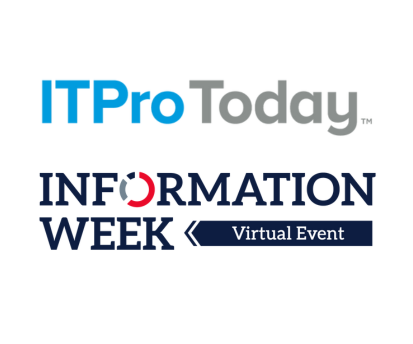HP WebOS Patents: Are Samsung, Nokia and Microsoft Bidding?
HP's webOS patent portfolio is on the block and Samsung is just the right customer.

HP is quietly opening for license its HP WebOS patent portfolio. After a two-week investigation into the portfolio and discussions with patent experts, it’s clear who’s likely to buy or license it.
That company is Samsung.
I expect Samsung to make a formal bid for at least an exclusive license of the valuable HP webOS patent portfolio within weeks.
My investigation shows the portfolio to be that broad and that deep. Its long-held and fundamental claims reach far into the guts of most mobile tech in use today or on the horizon. Samsung has the most to gain by grabbing it -- and the most to lose if someone else does.

Palm, remember, was among the first to market with mobile tech. As early as the mid 1990s, Palm cofounder Jeff Hawkins began filing patents along with other inventors. Over the years, their claims grew to include such basic and broad mobile tech bedrock as mobile multitasking, distributed networking, cloud computing, mobile user interface controls, telephony, visual search, 4G, touchtech and more.
In prior art citations – one measure of the power and monetary value of a patent – the HP-owned Palm webOs patent portfolio is especially meaty.
Samsung patent filings cite webOS innovations 192 times. By comparison, Nokia and Microsoft cite the webOS patents 166 and 104, respectively.
Just take one patent -- a basic one covering multitasking on a mobile phone, issued to Palm in 2003. Mobile makers have cited it as prior art 50 times and counting. That's "10 times what the average patent does and it shows real value," said Peter Conley, senior managing director at MDB Capital, a research firm that values IP based on a complex set of matrices.
MDB calculates patent value based on its PatentVest metric, detailed here.
In April 2010, Conley valued the webOS patent collection at $1.4B. It is worth a bit more now, he estimated to BYTE.
Now that the webOS patents are up for grabs, Samsung needs to grab them up now -- even if it has to pay a bit more than the rock bottom rates Samsung typically negotiates with licensors.
The WebOS portfolio provides Samsung or a competing bidder” with a unique competitive advantage,” Conley added. Of all companies who cite the webOS patents most, "Samsung would be the most logical buyer. This would give them the answer to Apple’s aggressive claims against Samsung" and other Google Android-based mobile tech makers, Conley said.
Apple cites all webOS patents a total of just 45 times. Still, it's worth noting HP is the only mobile tech maker Apple has not sued. And in the depiction of the patent wars below, HP is missing altogether.

"You don't sue HP and you don't sue IBM, those are the two rules," Conley joked. But you see where he's coming from.
HP is second only to IBM as the largest tech patent holder in the United States, records show. It holds 23,959 patents. Any tech company would be loathe to pick a company with intellectual property rights that deep.
HP stopped inventing and innovating a long time ago. On its most recent financial call, execs said a thoughtful execution of a true patent licensing move is in the works.
When HP bought then-struggling Palm for $1.2B a year ago, Palm's patent portfolio was immediately rendered unattackable.
The patents in the webOS portfolio, alone, stand to be a tidy profit center. While their patents don't necessarily provide HP with a "silver bullet," Conley said, Samsung will find value in them. At HP "there are serious discussions about licensing ... (HP execs) know that if they can license some of this into the tablet and smartpone market in a meaninful way, that's worth a lot of money.
"And that's driven by nothing more than the size of the install base and the number of competitors," he said.

So what's in the patents? This is first of a series of pieces I'll do that take you under the hook. Here are the first two patents I'll highlight.
One is a 2003 multitasking patent, filed by Hawkins in 1998, cited more than 48 times by mobile tech companies over the last decade. Multitasking on a web-enabled mobile phone is growing ubiquitous, and the HP Web OS portfolio has claims on that. Here’s a Palm video from last year explaining the multitasking inventions it employs in its Pre and other phones.
Another patent, issued to Hawkins and co-inventor Robert Yuji Haitani in 2009, is even broader. Filed in 2005, it describes “integration of the handheld computer and telephony” allowing users to switch between telephone mode and computer mode on a mobile phone “in a way that makes them logically separable” and no attached keyboard is required. This should sound awfully familiar to Apple. Microsoft will recognize it, too. It cited this particular patent 38 times, several times the average number an average patent gets. That’s indicative of its value, especially to Microsoft, which is offering or planning phones sporting much of the Palm technology as described.
According to that Palm patent (2005, US 7,555,727), one description holds:
“One disclosed embodiment includes a corresponding user interface for an integrated handheld computer, computing and telephone system … in one embodiment, a user is presented with an option of a predetermined number of interface views and yet another user interface .. that is available when there is an active telephone call. These views are displayed on a digitized pad, for example, a “touch” sensitive display .. and can be interactive with through the display itself .. an embodiment (includes) a dial pad view that is similar to a common touch tone dial pad (and) a speed-dial view (and) a call history view (that) displays a list of previous incoming, outgoing or missed calls and may be filtered as desired. As with the previous two views, the system may automatically switch from the call history video another user interface views as necessary. A fourth interface view includes a contacts view …”
In 2005, when Hawkins filed this idea of multiple phone interfaces, the iPhone wasn't even a glimmer inf Steve Jobs' eye. This presents a typical patent in the webOS collection -- an early claim on a mobile tech in wide use now.
For Samsung this is pure ammunition and in many ways it completes its IP collection.
This is first in a series of what BYTE found in the HP WebOS patent portfolio and how it directly relates to the future of Android, the patent wars and next gen technologies coming from 3D smartphones, video-streaming tablets and other technology on the horizon. Stay tuned.
Check out HP Palm chief ticking off the advancements webOS brings the HP TouchPad. His words match markedly with a rundown of other IP detailed in the webOS patents, on the block now at HP.
For more discussion check out this week's BYTE Wireless Radio or subscribe via iTunes.
Based in San Francisco, Gina Smith is editor-in-chief of BYTE. Email her with ideas and comments at [email protected] and follow her @ginasmith888. And follow @BYTE while you’re at it.
About the Author(s)
You May Also Like
Smart Service Management
June 4, 2024Tales of a Modern Data Breach: The Rise of Mobile Attacks
June 11, 2024The CIOs Guide to Enhancing GRC in 2024
June 20, 2024







